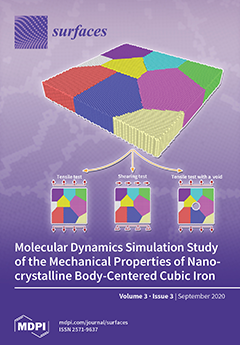Wastewater contaminated with dyes produced by textile industries is a major problem due to inadequate treatment prior to release into the environment. In this paper, the ability of ZnO to enhance the interfacial photocatalytic activity of lithium titanate/TiO
2 (LTO/TiO
2) for
[...] Read more.
Wastewater contaminated with dyes produced by textile industries is a major problem due to inadequate treatment prior to release into the environment. In this paper, the ability of ZnO to enhance the interfacial photocatalytic activity of lithium titanate/TiO
2 (LTO/TiO
2) for the photodegradation of methylene blue (MB) under visible light irradiation (4.38 mW/cm
2) was assessed. The ZnO-doped lithium titanate/TiO
2 (ZnO/LTO/TiO
2) was synthesized using a combination of hydrothermal and wetness impregnation methods. The high-resolution transmission electron microscope (HRTEM) and X-ray Diffraction (XRD) analyses indicate that the ZnO/LTO/TiO
2 contain several phases (ZnO, LTO, and TiO
2). The adsorption capacity of LTO/TiO
2 (70%) was determined to be higher compared to its photocatalytic activity (25%), which is attributed to the strong interaction between the Li and surface oxygen atoms with the MB dye molecules. The introduction of ZnO improved the photocatalytic ability of LTO/TiO
2 by 45% and extended the life span of ZnO/LTO/TiO
2. The ZnO/LTO/TiO
2 can be reused without a significant loss up to four cycles, whereas LTO/TiO
2 had reduced adsorption after the second cycle by 30%. The ZnO increased the surface defects and restrained the photo-induced electrons (e
−) from recombining with the photo-induced holes (h
+). Scavenging tests indicated that the hydroxyl radicals played a major role in the photodegradation of MB, which is followed by electrons and holes.
Full article





